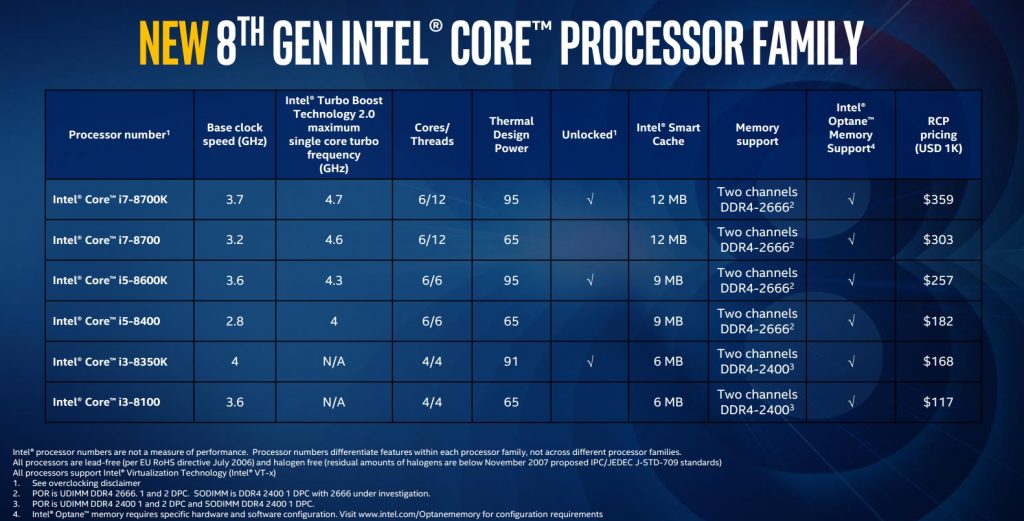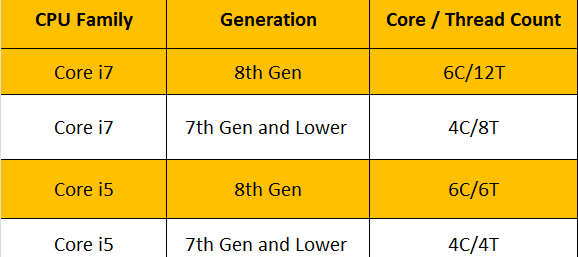The Intel Core i5 2500K is essentially a four-threaded quad-core processor built on 32nm fabrication chipset. It was one of the first processors to be released in 2nd generation of core i5 series based on Intel’s new Sandy Bridge architecture. In its new architecture Intel has played around with the processor socket, having reduced number of pins from two to one and updated the socket type to LGA1155. Though old socket size has been retained however, the new socket type is LGA1155 is not compatible with old motherboards which don’t support Sandy Bridge architecture.
Also Check: Best i5 Laptops in India
Intel Core i5 2500k Processor

In the core i5 2500K processor taxonomy, the numerical prefix 2 signifies that it’s a 2nd generation processor model and subsequent 500 is indicative of the Stock Keeping Unit (SKU). The alphabetical suffix K indicates unlocked multiplier capability that enhances computing speeds of the 2nd generation core i5 2500K processor.
With a base clock speed of 3.3GHz, the core i5 2500 K processor works fine for most applications. However, the Intel Turbo Boost technology 2.0 clocks the additional 400MHz speed when multitasking, depending upon the thermal conditions. These processors can provide only four threads for processing as they are not equipped with Intel Hyper-Threading technology; in fact the technology is not available at all in core i5 series processor models.
The L3 cache memory is 6MB, which means less memory size available to share for the quad cores during processing. The 2nd generation core i5 2500K processors run on DDR3-1066/1333 MHz memory controlled by Integrated Memory Controller. The IMC enables data transfer bandwidth of 21GB/sec by controlling two gates of DDR3 memory and by reducing processor latency.
Intel has packed the Sandy Bridge based core i5 2500K processor with Intel HD Graphics 3000 for enhanced graphical performance. It is the best Intel Integrated graphics in any processor model. Though the base frequency of the integrated graphics controller is 850MHz but it can boost an additional 1.1GHz of dynamic graphical frequency. Other advanced graphical technologies include Intel InTru 3D technology, Intel Clear Video HD Technology and Dual Display Capability that adds to the sensational visual performance deliver by the core i5 2500K loaded CPU’s.
At a recommended customer price of $216-$224, this 2nd generation core i5 processor is just rightly priced for the multitasking capability and visual performance it delivers. However, Intel has tried to increase its profit margins by overhauling the socket compatibility of new core i5 2500K processors with the old motherboards. People still using the LGA1156 compatible motherboards will have to spend extra money for the new compatible motherboards too.
Intel Core i7 Processor| Smart Multitasking Performance Architecture

Also Check: Best i7 Laptops in India
The Intel Core i7 processors are high end processors for desktop computers. These processors are designed and built to enable serious multitasking and run the heavy configuration software packages on desktops. The new core i7 processors are based on the latest Sandy Bridge architecture of Intel and are known as 2nd generation processors released in early 2011. The core i7 is basically a quad core processor series; however, it has hyper threading technology that contributes to a total of eight threads thus adding eight-way multi-tasking ability. The hyper threading technology has been dropped off from the core i5 processor series.
The core i7 processor runs applications that do image touching and editing, video encryption and coding, creating digital multimedia content or playing high definition graphics video games much faster than you can imagine. All the core i7 processors are Intel Turbo Boost technology 2.0 enabled which lets them deliver extra performance on demand. The cache memory ranges from 8MB to 12MB in most advanced core i7 processor, which allows the four cores to share the cache memory for efficient and dynamic data storage while processing the programs.
The clock speed for 2nd generation core i7 processors ranges from 2.80 GHz to 3.5 GHz however, with turbo boost the maximum attainable frequency in any of the models is 3.9 GHz. Most models of core i7 have a maximum memory of 32 GB available on DDR3 memory type with 2-4 memory channels. The integrated memory controller in core i7 series processors reduces the latency during processing with increased bandwidth for running large data files or memory intensive applications.
Intel has packed the 2nd generation core i7 processors with Intel QuickPath Interconnect technology which helps processors transfer data at high speeds of 25GB/s. The Intel HD graphics technology on core i7 processors means their performance with high definition videos, music and photographs will leave you spellbound. With base frequency of 850 MHz and maximum available dynamic graphics frequency of 1.35 GHz, you must embrace yourself for true life like viewing experience.
The Intel core i7 processors are very advanced for general users and there is high price difference from core i5 processors. The smart multitasking performance these deliver with large amount of data calculations, video editing or running multithread programs cannot usually be experienced by a general users. The processor fits more into the schemes of the enterprise level desktops where they use ERP programs or specific software and have loads of data transfer to manage.
Intel Core i5 Processor | Based on Sandy Bridge Architecture
The 2nd generation Intel Core i5 Processors are based on the Sandy Bridge architecture released by Intel in early 2011. Unlike the previous Nehalem architecture, which had an array of Core i5 processors with different code names making it confusing for the buyers to choose; the 2nd generation core i5 processors uses a four character model number with Sandy Bridge as prefix.
Most of the Core i5 processors on Sandy Bridge architecture are quad-core except the new dual-core core i5-2390T. The suffix T at the end of model name means ultra-low power while the other suffixes K and R mean unlocked multiplier and low-power respectively. The cache memory for dual-core processors is 3 MB whereas for the quad-core processors it is 8 MB, which means that it does not support serious multitasking.
Though all the core i5 processor models are Turbo Boost technology enabled in the range of 300-400 MHz however, Intel has dropped the hyper-threading from this product line. Currently all the models available have only 4 threads. The Turbo Boost technology gives a secondary boost to processing speed whenever required by the operating system whereas Hyper threading enables better performance while executing programs like video editing that requires multiple threading as each thread acts like double.
With the launch of Sandy Bridge architecture Intel brought a single type of LGA 1155 socket for all core i5 processors. The core i5 processors use the DDR3-1066/1333 memory type with processor graphics being either Intel HD 2000 or Intel HD 3000. Clock speed of the core i5 processors for desktops ranges from minimum 2.4 GHz to 3.3 GHz maximum.
Among the more advanced technologies brought on board include Intel Anti-Theft technology, Intel My Wi-Fi technology, Intel Virtualization technology and Thermal Monitoring technology among various models of core i5 processors. These 2nd generation core i5 processors are designed to enhance visual experience with their Intel Flexible Display Interface, Intel Clear Video HD technology and Intel Tru 3D technology. These new graphical technologies make videos and pictures rich in colour with sharp images and life like feeling.
It is very obvious that Intel Core i5 Processors are mid-range performance processors aimed at people looking for who are not regular with heavy multitasking or multi-threading programs. For most general users and gamers, included, the 2nd generation Sandy Bridge core i5 processors are a very good option within the affordable price range.
